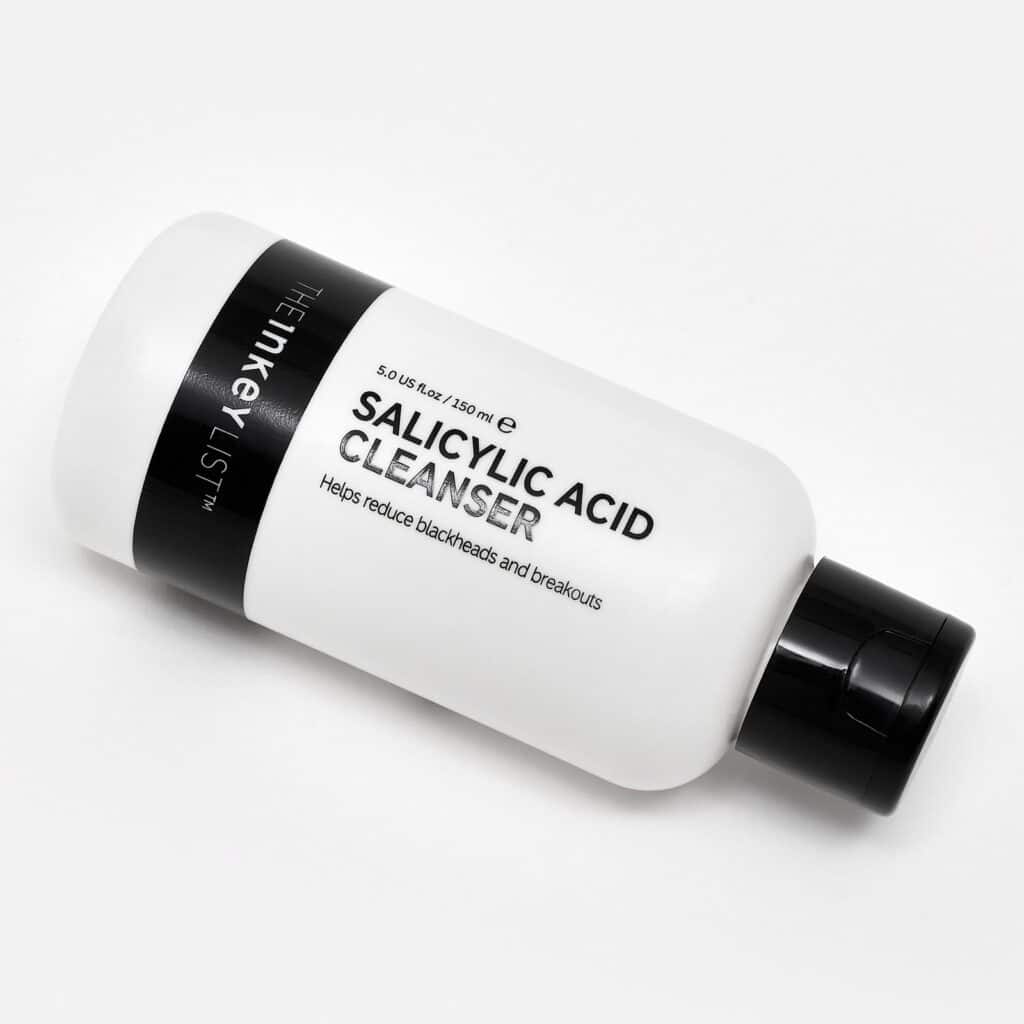Salicylic Acid is a common component in skincare treatments. Many people use it to exfoliate the skin and remove dead cells that can cause acne. However, it’s also an anti-aging treatment. It slows collagen breakdown.
One question many people have is, “does salicylic acid expire?” Yes, it does! There are some guidelines on how long you should keep your Salicylic Acid before throwing it out, but other factors may affect the time.
For example: If you buy a bottle of Salicylic Acid manufactured in 1998 and shear the top off with a pair of scissors to use for exfoliating purposes, then yes – it will expire.
This blog post covers how to tell if it has expired, what happens when it goes bad, and how to store it properly so that you can use your tube for a long time. Read on to find out.
What Are The Ingredients in Salicylic Acid?
Salicylic Acid is a compound that you can find in many products such as personal care and household cleaning supplies. The main ingredient of Salicylic Acid is benzoic Acid, which has been helpful for medicinal purposes since ancient times because it helps with pain relief (for example, like the headache from hitting your thumb with a hammer).
However, today it works in different ways. For example, It can be an anti-fungal agent when applied to the skin in creams and lotions. It prevents athletes’ foot or other forms of infections caused by fungus. In addition, some prescription medications such as Duac and Acanya also contain Salicylic Acid.
What Does It Do for the Skin?
Salicylic Acid is a popular ingredient in skin care products because it helps remove dead skin cells that can clog pores and cause acne to appear on the face, neck, chest, back, or shoulders. Since Salicylic Acid penetrates deep into the pores, it is also an exfoliating agent to smooth out wrinkles and fight to age.

How Does It Work?
Salicylic Acid penetrates deep into the skin, where it loosens up dead cells so you can remove them easily by a washcloth or facial scrub. In addition, Salicylic Acid removes excess oil from the skin that can lead to acne.
The process is a bit like sanding down a piece of fine furniture – you have to remove all of the old paint and wood to be smooth when you put on fresh coats. In this case, Salicylic Acid removes excess oil from your pores, so they are clean before applying moisturizer or other topical remedies.
Does Salicylic Acid Expire?
Salicylic Acid has a shelf life of about two years, which means you can keep it for that long before throwing it out. However, when your tube starts to change color from clear to pinkish-brown, the Salicylic Acid is beginning to degrade – and you should replace it with a fresh tube.
How To Tell If It Has Expired
If It Has A Foul Odor
Salicylic Acid can be transparent or white and have either an amber hue or be completely transparent. If you notice that your salicylic Acid is no longer transparent but instead cloudy with a yellow tint, it means it has expired. It will NOT smell good.
If The Formula Has Changed
Often when salicylic Acid expires, you can see that the product is two layers. That means that there are two different formulas in one container – one on top and another at the bottom of your bottle. When that happens to a liquid substance like Salicylic Acid, it means that the product is no longer suitable, and you should throw it out.
If It Is A Suspension
Unlike liquids that separate into layers when salicylic Acid expires, suspensions do not change their appearance. Instead, they become more challenging to work with and require users to remix the product before using it. That means shaking your tube of acne cream or lotion until it becomes homogenous again.
If The Container Has Been Unsealed
Salicylic Acid in a tube can easily get contaminated if someone tries to unscrew the cap and use their fingers to scoop out some of the product. That can also happen if you leave an open bottle on your countertop where dust gets into the tube and sticks to the product.
That can change its effectiveness and make it less effective for your skin’s needs, so if you notice that dust or dirt has gotten into your container, then toss it out.
What Happens When Salicylic Acid Expires?
Salicylic Acid can be an effective treatment if used properly, but you need to know how long your salicylic Acid will last before using it for maximum benefit. It expires after two years.
After its expiry, the formula will start to change, and you could see separation in the product – which is not safe for use on your skin. The active ingredients can also lose potency, which means they are less effective at fighting off acne or aging signs.
The substance does tend to go bad after its opening, so it is essential to keep an eye on the expiration date.
Can You Use Salicylic Acid After It Expires?
If you have some salicylic acid that is about to expire, it is safe to use it on your skin. Some people may experience tingling or burning when they do that, but if the expiration date has not passed, go ahead and apply some of the product onto your face.
However, you should not apply Salicylic Acid that is over two years old. It will feel oily and may cause some tingling, but it won’t be as effective for fighting off acne or moisturizing your skin at the same time.
How To Store Salicylic Acid
When you are not using your salicylic Acid for skincare purposes, ensure you store it appropriately in a cool dark place where no light can seep through. It will help prolong its shelf life and prevent the formula from changing.
Indoor storage is better than outdoor storage because there will be less room for temperature changes and fluctuations in humidity to affect your bottle of Salicylic Acid. You should also keep it away from direct sunlight not to lose potency before you use it up.
We know from the above that Salicylic Acid does expire, and you should not use those more than two years old on your skincare. You can keep it in a cool dark place like the bathroom to prevent any temperature changes or exposure to light, but make sure that there is no dirt present when you open up your container of acne cream.
